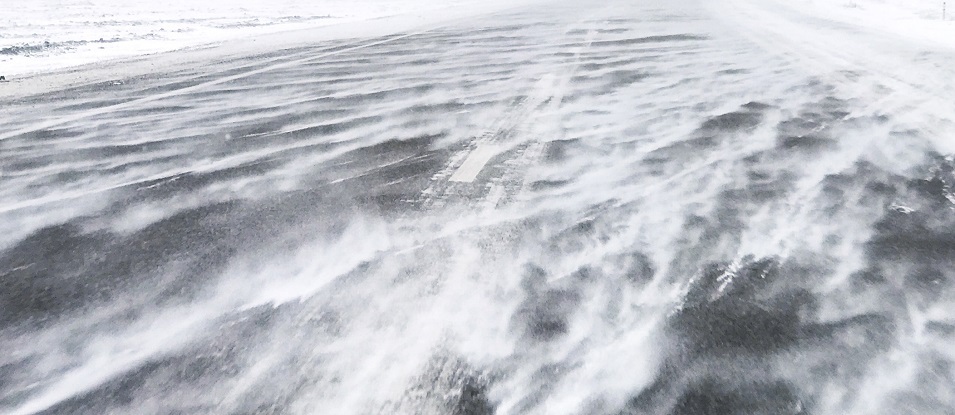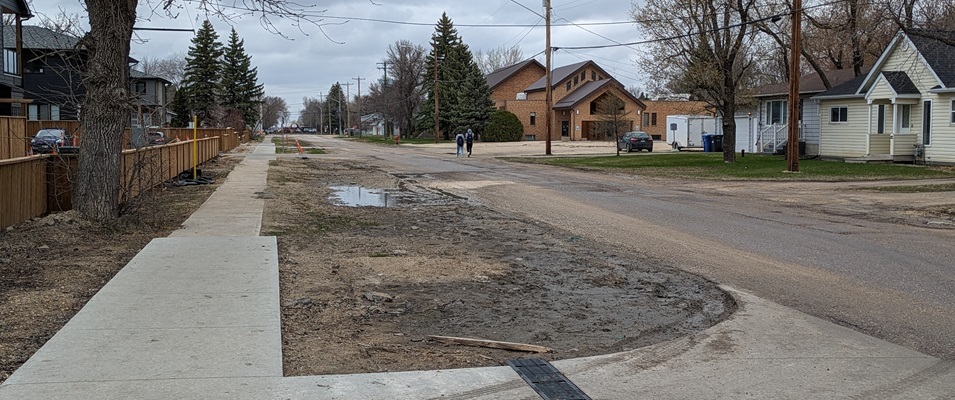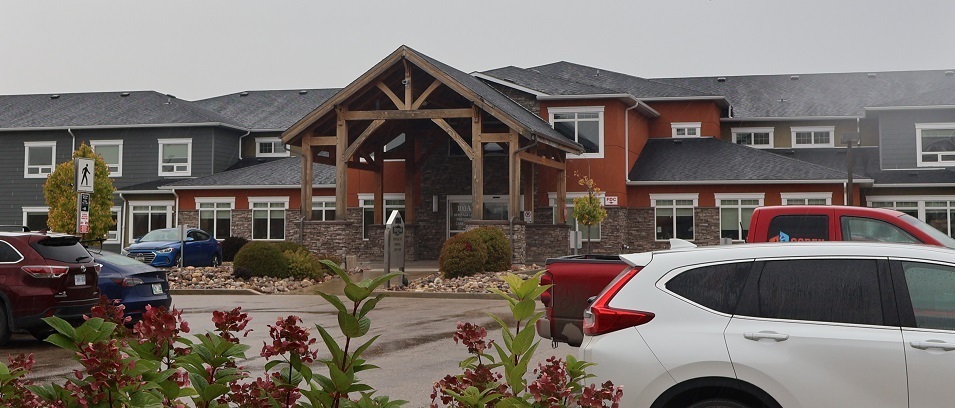
Near record-breaking snowfall, days on end with brutal winds, and arctic air masses that seem to park overhead and never leave… the winter of 2022 has boasted all the right ingredients to make for one of the most challenging seasons ever for Manitoba’s drivers.
Residents of Niverville in particular are forced to regularly drive a portion of highway that seems to deteriorate rapidly when conditions change for the worse.
Niverville is located along a 10-kilometre stretch of Provincial Road 311, an east-west highway, without any other paved routes leading in or out. This stretch of highway has few treed properties—indeed, few trees of any kind—a factor some residents have identified as contributing to especially hazardous conditions.
When winds pick up after even a small amount of precipitation, there is no shelter to prevent the build-up of ice and snow. And nothing to stop almost complete whiteout conditions from descending on unlucky motorists.
A Brutal Winter
This winter is shaping up to be one of the snowiest on record, with some of the longest stretches of frigid temperatures recorded in January and February.
In a statement on his Twitter account, retired meteorologist Rob Paola said his records show this year to be the third snowiest on record. And while the average winter sees 12 days reaching -30ºC or lower, this year we’ve had more than 25 (so far).
“Not only has it been a snowy month, but it’s been cold,” Paola wrote on February 24. “Today will be our 14th straight day below normal. Only three days this month have averaged significantly above normal. Will likely end up as coldest February here since 2014.”
Niverville resident Nicole Ross works as a nurse at the hospital in St. Pierre. She says this year has been the worst for winter driving she has ever experienced.
“I take 311 to 59 any given day,” says Ross, who has lived in Niverville for 11 years. “Lately, the way healthcare has been, I’m pretty much working fulltime hours. So I’m on that highway any given time, sometimes middle of the night, sometimes middle of the day, so I’m very accustomed to drive on that highway… It’s been blowing snow every other day, or it’s been so cold that the highways are just like hockey rinks, just pure ice. This year sticks out as one of the worst I’ve driven in.”
Ross feels there are many factors contributing to how dangerous the driving has been this year. The brutal conditions on Highway 311 frequently come up in conversation with friends, family, and coworkers.
“Because it’s so wide open, as with any east-west highway travel, you have a north wind blowing in the cold or a south wind blowing in the warm air, and then you’re always getting the blowing snow if there is any to be had,” she says.
One solution could be the addition of shelterbelts—in other words, planting lines of trees along the roadway to break high winds—along the worst stretches of PR 311.
It’s not a new idea among Ross and her friends, but she says they don’t necessarily see it as a practical idea.
“It would be great if they had shelterbelts, but we recognize that a lot of the land is farmer’s fields,” she says. “We know [the government] doesn’t have the land and it’s likely outside of their control.”
However, the lack of shelter isn’t the only problem along Highway 311. Ross says she and her friends are concerned about the crumbling condition of the roadway itself.
“We’ve all discussed how we can breathe a sigh of relief when we reach Highway 59, because the lines on the road can give you a sense of how to navigate,” Ross says. “On 311, there’s no definite lines for the shoulder. There’s no lines in the middle of the highway separating the lanes. Because it is blowing in and drifting, you often don’t know if you’re heading for the ditch or in the middle of the highway or not.”
She would like to see the province make a greater effort to fix the shoulders and paint fresh lines more frequently, especially as the amount of traffic on this highway continues to grow as people keep flocking to Niverville.
“The upkeep on 311 is so poor,” says Ross. “Niverville is the fastest growing community in Manitoba and it’s dangerous. They’re going to have to keep up better as a province. There has to be some improvements.”
Safety Concerns
New residents, seasoned drivers, and town officials alike have highway safety top of mind this winter. The topic of shelterbelts has been floated in many online discussion groups in recent weeks.
The Province of Manitoba says that a shelterbelt program was announced this past summer through Manitoba Habitat Heritage Corporation. Although they can confirm that they are monitoring the Niverville area for increases in traffic, they haven’t confirmed whether Niverville is eligible for the shelterbelt program.
“Manitoba Transportation and Infrastructure’s most recent traffic volume count on PR 311, west of Provincial Trunk Highway (PTH) 59, was conducted in 2019,” reads a statement from a provincial spokesperson. “The annual average daily traffic count was 5,800. The department anticipates conducting another traffic count at this location this year.”
Mayor Myron Dyck says that the town has been discussing the issue of poor conditions on Highway 311, including the possibility of installing trees to create a shelterbelt.
Many residents have also pointed to the lack of information available on winter driving conditions along this highway, as the road isn’t currently listed on Manitoba 511, the province’s website dedicated to road and traveller information.
“Our plan is to reach out to Manitoba Infrastructure in regards to putting PR 311 on the 511 site, and also to inquire about the process of installing a shelterbelt,” says Mayor Dyck.
In comments made online, Dyck referred to the community of Elie in the RM of Cartier and how a shelterbelt had been installed along the Trans-Canada Highway. The highway running west of Winnipeg is known for quickly deteriorating conditions in blustery weather, similar to Highway 311.
“A barrier of some sort would certainly help,” Dyck wrote.
Shelterbelts in Other Communities
Christa Vann Mitchell, reeve for the RM of Cartier, reports mixed reviews on the trees planted near Elie as part of the province’s shelterbelt project.
She says there was a tree-planting initiative about 30 to 40 years ago to create a shelterbelt in the median along Highway 1.
“But that didn’t mitigate snowbanks, and it created a hazard for drivers if they did hit the ditch,” says Vann Mitchell. “Then in 2019, they planted trees on the north side of the [TransCanada] by Elie. It’s been hard to tell if there’s been any benefit this year because of the record snowfall amounts, but there is no other location to put such trees. If they would’ve planted a bit further away from the highway, on both sides and not just the one, it may have been more successful. I’m not sure.”
Vann Mitchell says that the community has greatly appreciated the province’s effort to install the trees, but she also points out that there have been challenges. The health of the older trees is in decline and many of the newer trees didn’t grow.
In August 2021, the provincial government committed another $3 million to maintain the health of existing trees and establish an additional 10 kilometres of shelterbelts in the area. They say this will enhance safety and demonstrate natural infrastructure along the Trans-Canada Highway between Winnipeg and Portage la Prairie.
“There’s a terrible need in Manitoba for more trees in general,” says Vann Mitchell. “So when it comes to highways and shelter, we see the need for trees and it may help… but it also depends immensely on the weather. The wind plays a huge factor. This year, the snow has gathered so badly that the snow piles on either side of the road are prohibitive. If we had it on both sides, further out, it may help. But then we’re dealing with farmland.”
This raises an important point, anticipated by Nicole Ross and her friends. The province often needs to procure land or use the land they already own near the highways. Vann Mitchell says farmers need all the land they can get, so the government typically doesn’t look to buy up farmland just for shelterbelts.
The town of Neepawa is another Manitoba community with a major east-west highway.
Marilyn Crewe, the town’s economic development officer, says that Neepawa likely has fewer residential commuters due to their greater distance from big cities.
She also points out that Neepawa is uniquely located at the crossroads of two provincial highways, Highway 16 and Highway 5, both of which act as major transportation corridors. Because of this, they have a priority agreement with Manitoba Infrastructure. When there’s a weather event, the province clears and maintains the roads quickly.
In fact, she adds that Neepawa doesn’t even own a grader.
Safety a Priority
Vann Mitchell says the problem of driver safety certainly isn’t unique to Elie and Niverville. Many communities in Manitoba with large commuter populations are asking for help.
“Some communities and colonies around here are begging the province to come out and clear the roads, and they have felt quite stuck,” says Vann Mitchell. “Two-lane highways are always dangerous. The emergency vehicles reaching residents is always the number one concern. And they’ve got to clear one lane for emergency vehicles first before cleaning up the entire roadways. Shoulders are last.”
She says leaders in her community are always monitoring the highways during a weather event. Many have criticized the province for closing highways too early or too late.
“We need to realize that in many cases the highway crews are downright skeletal,” she says. “They’ve been trying to maintain the roads, and the conditions worsen and then people say they close the roads too late. In our area, we know they are trying to work with people who may have left for work, travelled the highways, and then they know the roads are going to close so they’re trying to get home. I think they delay closing for a little while so people can make the choice to get home.”
She says the options can feel limited, but everyone is doing their best in what has been an exceptional year of winter weather.


















